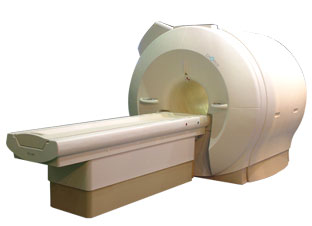 | Info
Sheets |
| | | | | | | | | | | | | | | | | | | | | | | | |
 | Out-
side |
| | | | |
|
| | | | |
Result : Searchterm 'Array' found in 8 terms [ ] and 53 definitions [ ] and 53 definitions [ ] ]
| previous 31 - 35 (of 61) nextResult Pages :  [1 2] [1 2]  [3 4 5 6 7 8 9 10 11 12 13] [3 4 5 6 7 8 9 10 11 12 13] |  | |  | Searchterm 'Array' was also found in the following services: | | | | |
|  |  |
| |
|
Device Information and Specification
CLINICAL APPLICATION
Dedicated extremity
SE, GE, IR, STIR, FSE, 3D CE, GE-STIR, 3D GE, ME, TME, HSE
IMAGING MODES
Single, multislice, volume study, fast scan, multi slab
2D: 2 mm - 10 mm;
3D: 0.6 mm - 10 mm
4,096 gray lvls, 256 lvls in 3D
POWER REQUIREMENTS
100/110/200/220/230/240
| |  | | | |
|  | |  |  |  |
| |
|

'Next generation MRI system 1.5T CHORUS developed by ISOL Technology is optimized for both clinical diagnostic imaging and for research development.
CHORUS offers the complete range of feature oriented advanced imaging techniques- for both clinical routine and research. The compact short bore magnet, the patient friendly design and the gradient technology make the innovation to new degree of perfection in magnetic resonance.'
Device Information and Specification
CLINICAL APPLICATION
Whole body
Spin Echo, Gradient Echo, Fast Spin Echo,
Inversion Recovery ( STIR, Fluid Attenuated Inversion Recovery), FLASH, FISP, PSIF, Turbo Flash ( MPRAGE ),TOF MR Angiography, Standard echo planar imaging package (SE-EPI, GE-EPI), Optional:
Advanced P.A. Imaging Package (up to 4 ch.), Advanced echo planar imaging package,
Single Shot and Diffusion Weighted EPI, IR/FLAIR EPI
STRENGTH
20 mT/m (Upto 27 mT/m)
| |  | |
• View the DATABASE results for 'CHORUS 1.5T™' (2).
| | | | |
|  | |  |  |  |
| |
|
| |  | |
• View the DATABASE results for 'Cartesian Sampling' (4).
| | | | |
|  |  | Searchterm 'Array' was also found in the following services: | | | | |
|  |  |
| |
|
Cervical spine MRI is a suitable tool in the assessment of all cervical spine (vertebrae C1 - C7) segments (computed tomography (CT) images may be unsatisfactory close to the thoracic spine due to shoulder artifacts). The cervical spine is particularly susceptible to degenerative problems caused by the complex anatomy and its large range of motion.
Advantages of magnetic resonance imaging MRI are the high soft tissue contrast (particularly important in diagnostics of the spinal cord), the ability to display the entire spine in sagittal views and the capacity of 3D visualization. Magnetic resonance myelography is a useful supplement to conventional MRI examinations in the investigation of cervical stenosis. Myelographic sequences result in MR images with high contrast that are similar in appearance to conventional myelograms. Additionally, open MRI studies provide the possibility of weight-bearing MRI scan to evaluate structural positional and kinetic changes of the cervical spine. Indications of cervical spine MRI scans include the assessment of soft disc herniations, suspicion of disc hernia recurrence after operation, cervical spondylosis, osteophytes, joint arthrosis, spinal canal lesions (tumors, multiple sclerosis, etc.), bone diseases (infection, inflammation, tumoral infiltration) and paravertebral spaces.
State-of-the-art phased array spine coils and high performance MRI machines provide high image quality and short scan time. Imaging protocols for the cervical spine includes sagittal T1 weighted and T2 weighted sequences with 3-4 mm slice thickness and axial slices; usually contiguous from C2 through T1. Additionally, T2 fat suppressed and T1 post contrast images are often useful in spine imaging. See also Lumbar Spine MRI.
| |  | |
• View the DATABASE results for 'Cervical Spine MRI' (2).
| | |
• View the NEWS results for 'Cervical Spine MRI' (1).
| | | | |  Further Reading: Further Reading: | News & More:
|
|
| |
|  | |  |  |  |
| |
|
| |  | |
• View the DATABASE results for 'Coil Diameter' (3).
| | | | |
|  | |  |  |
|  | |
|  | | |
|
| |
 | Look
Ups |
| |